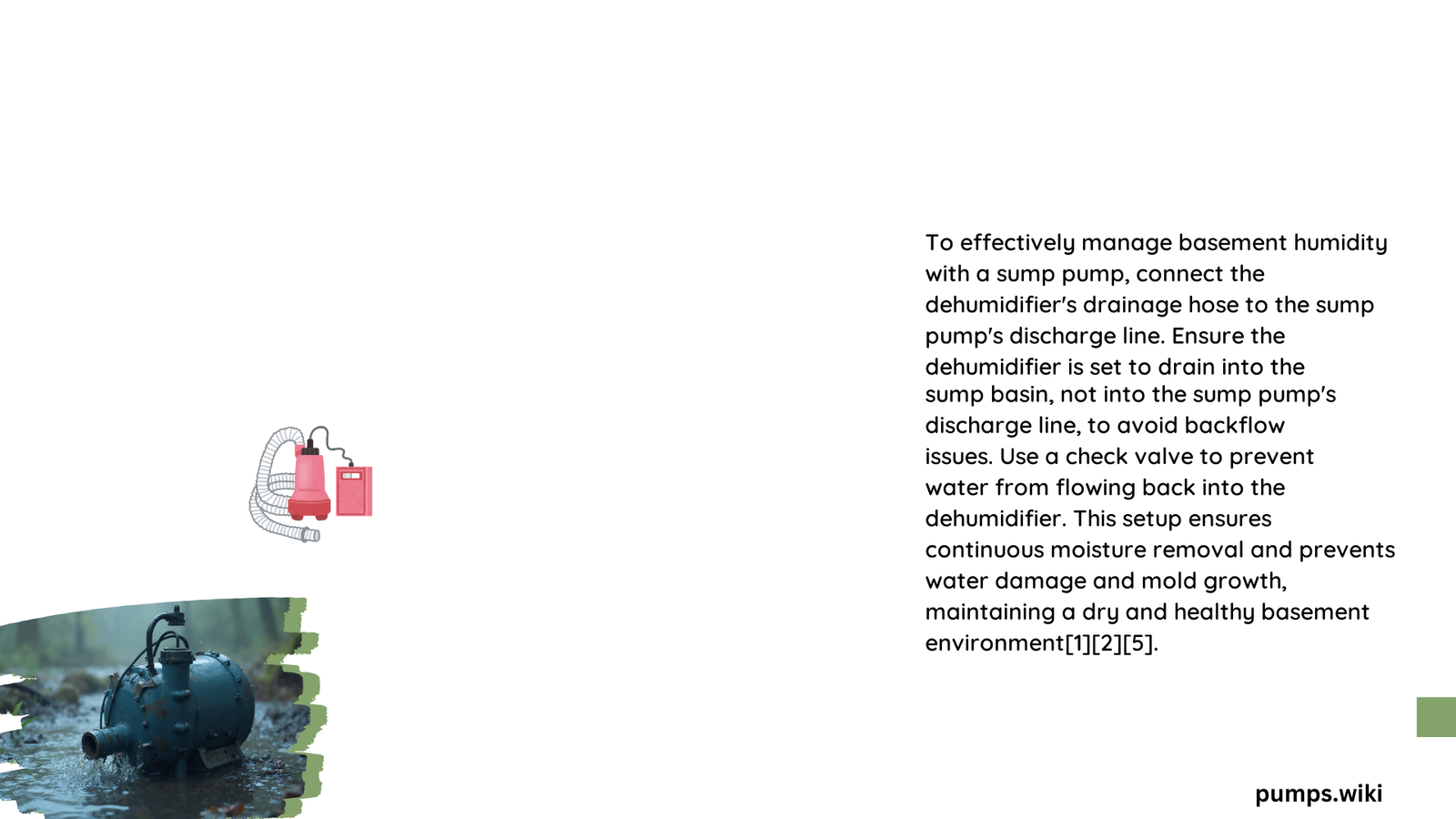Basement moisture can wreak havoc on your home’s foundation, creating an environment ripe for mold, mildew, and structural damage. A strategic combination of a dehumidifier and sump pump offers a comprehensive solution to combat excess moisture, protecting your basement from potential water-related issues. By understanding the synergy between these two critical moisture control devices, homeowners can create a dry, healthy basement environment that preserves property value and ensures long-term structural integrity.
What Makes a Dehumidifier and Sump Pump Essential for Basement Moisture Control?
Basement moisture is more than just an inconvenience—it’s a potential threat to your home’s structural health. Excess humidity can lead to:
- Mold and mildew growth
- Wood rot and structural damage
- Increased allergen levels
- Unpleasant musty odors
- Potential foundation deterioration
How Do Dehumidifiers and Sump Pumps Work Together?
| Device | Primary Function | Moisture Control Mechanism |
|---|---|---|
| Sump Pump | Remove standing water | Pumps water out of basement pit |
| Dehumidifier | Reduce air moisture | Extracts water vapor from air |
What Are the Key Compatibility Requirements?

When integrating a dehumidifier with a sump pump, consider these critical factors:
- Electrical Specifications
- Verify 120V compatibility
- Use heavy-duty extension cords (#14 or #12 wire)
-
Check individual power requirements
-
Size and Capacity Considerations
- Select dehumidifier based on basement square footage
- Recommended capacity: 50-pint per day for moderate basements
- Ensure adequate airflow around the unit
What Drainage Options Exist for Basement Moisture Management?
Gravity Drainage Method
- Direct drain hose into sump pit
- No additional pumping required
- Simple and cost-effective solution
Condensate Pump Approach
- Built-in pumps for elevated water discharge
- Provides flexibility in placement
- Useful for basements with limited drainage options
How to Optimize Moisture Control Performance?
Recommended Practices:
– Maintain 30-50% relative humidity
– Use humidistat for automatic monitoring
– Clean dehumidifier filters regularly
– Inspect sump pump quarterly
– Check drainage systems for potential blockages
What Equipment Should You Consider?
Top Recommended Models
- Whynter Energy Star Portable Dehumidifier
- Large water tank
- Continuous drain system
-
Accurate humidity sensor
-
Insignia NS-DH35WH1 35 Pint Dehumidifier
- Suitable for 2,000 sq. ft. spaces
- Quiet operation
- Easy-to-empty water tank
What Installation Steps Should You Follow?
Required Tools
- Dehumidifier
- Drain hose
- Extension cord
- Check valves
- PVC piping (optional)
Installation Timeline
- Dehumidifier setup: 1-2 hours
- Sump pump connection: 1-3 hours
What Potential Challenges Might You Encounter?
- Ensuring proper airflow
- Preventing water backflow
- Verifying sump pump functionality
- Managing electrical connections
- Selecting appropriate drainage method
Pro Tips for Long-Term Success
- Schedule annual professional inspections
- Monitor humidity levels consistently
- Invest in quality equipment
- Address any water intrusion immediately
- Consider additional waterproofing measures
Conclusion
A well-implemented dehumidifier and sump pump system transforms your basement from a potential moisture disaster zone into a dry, protected space. By understanding their complementary functions and following best practices, homeowners can effectively manage basement humidity and protect their property’s structural integrity.
